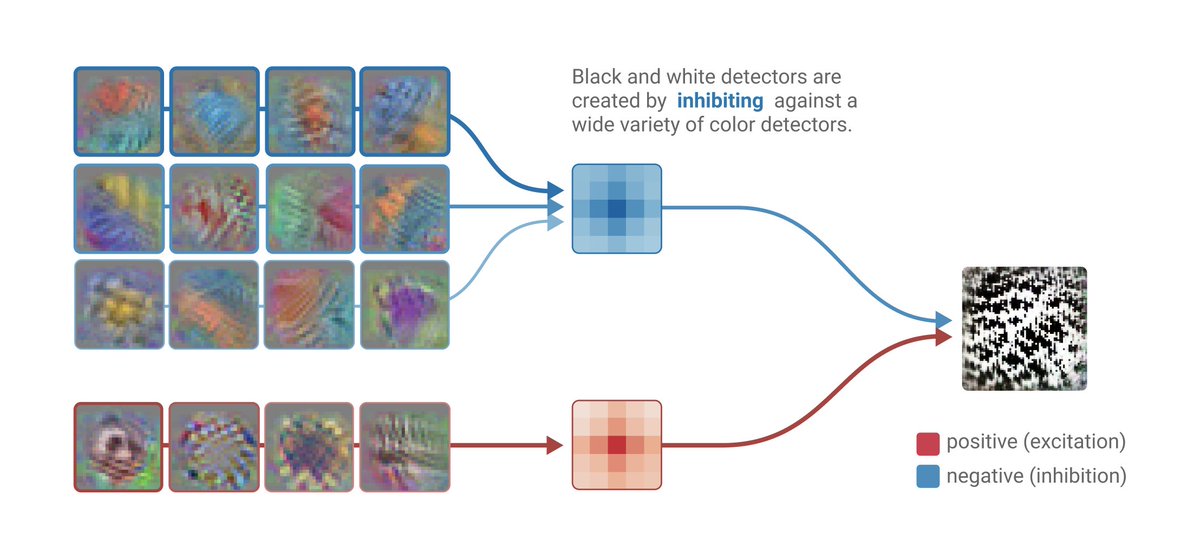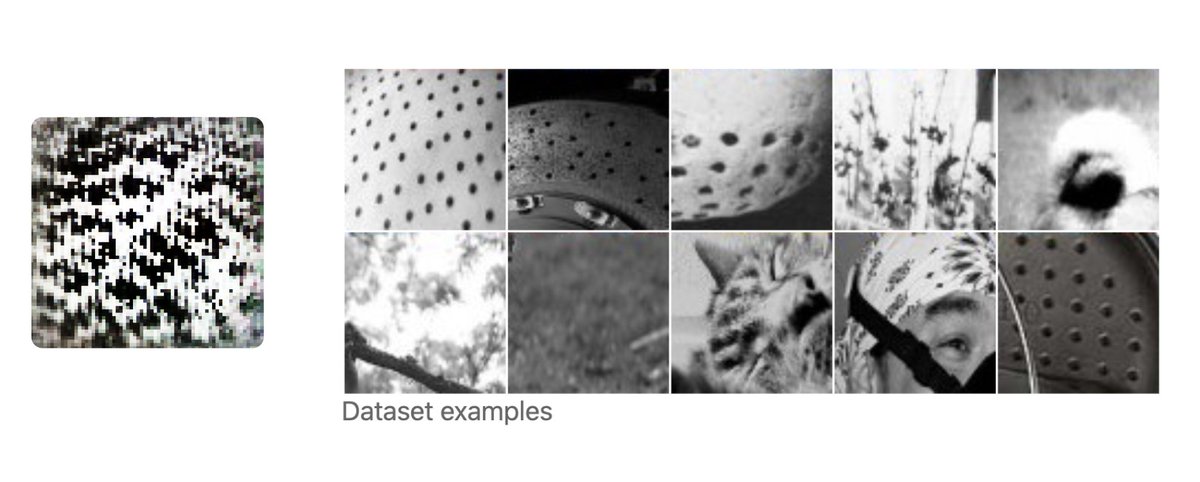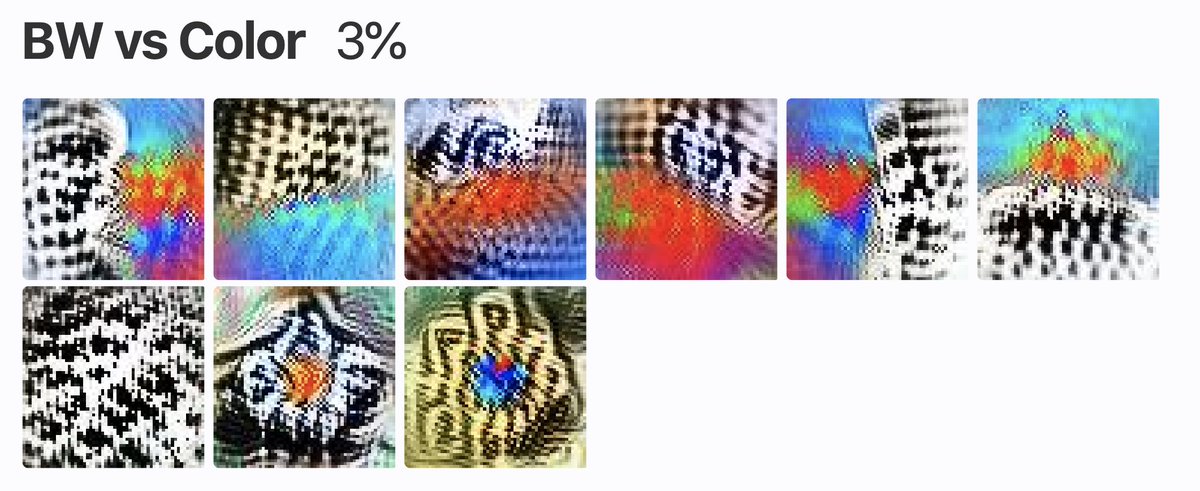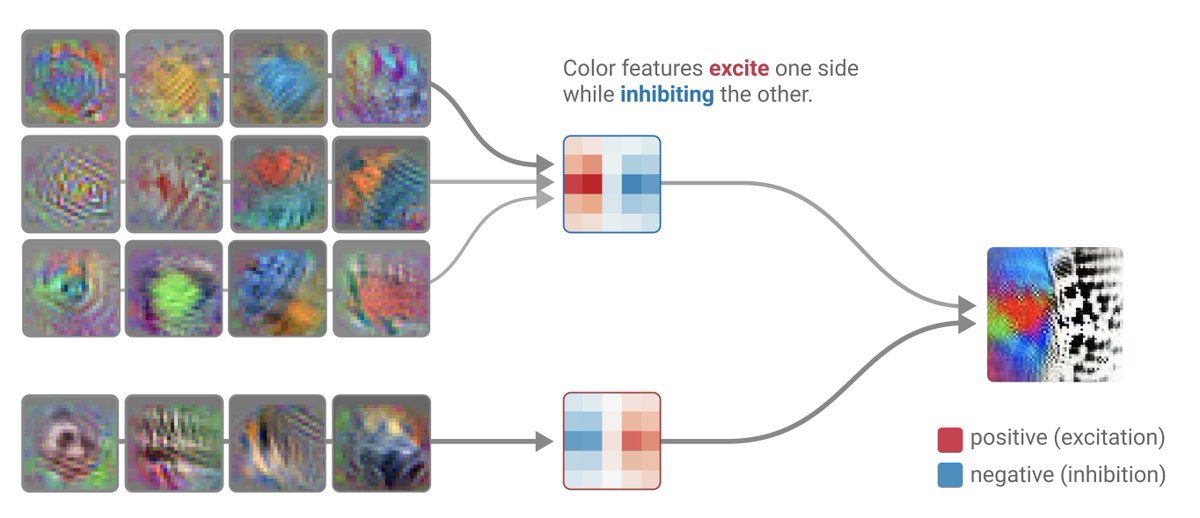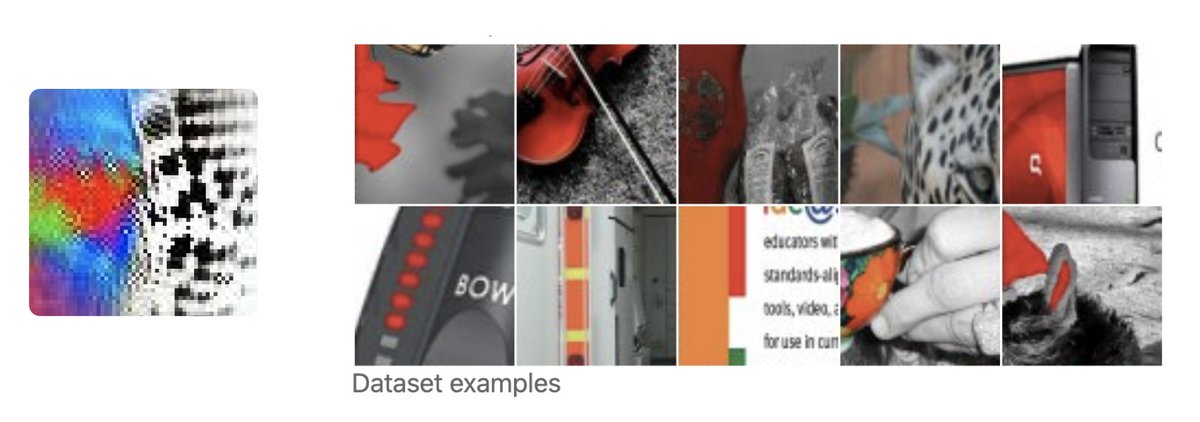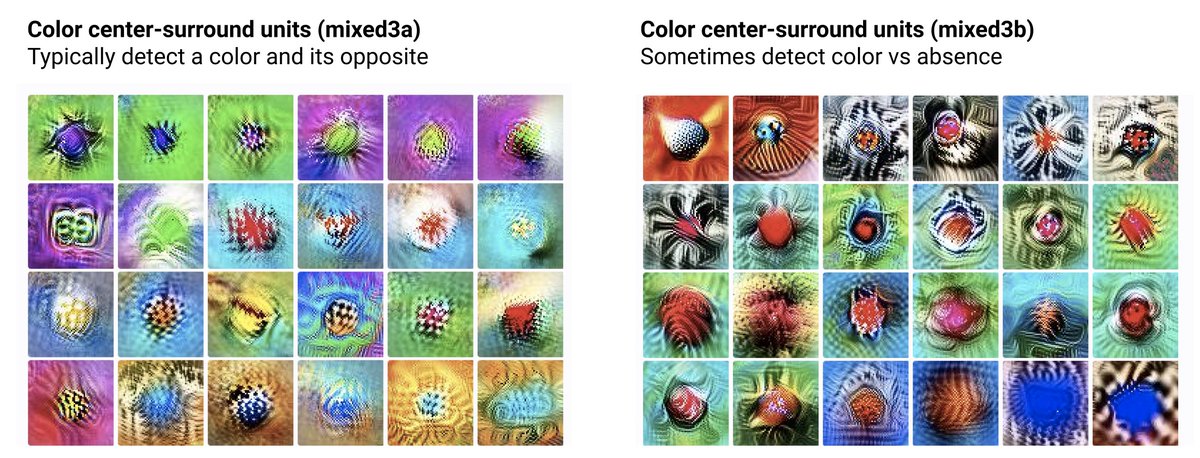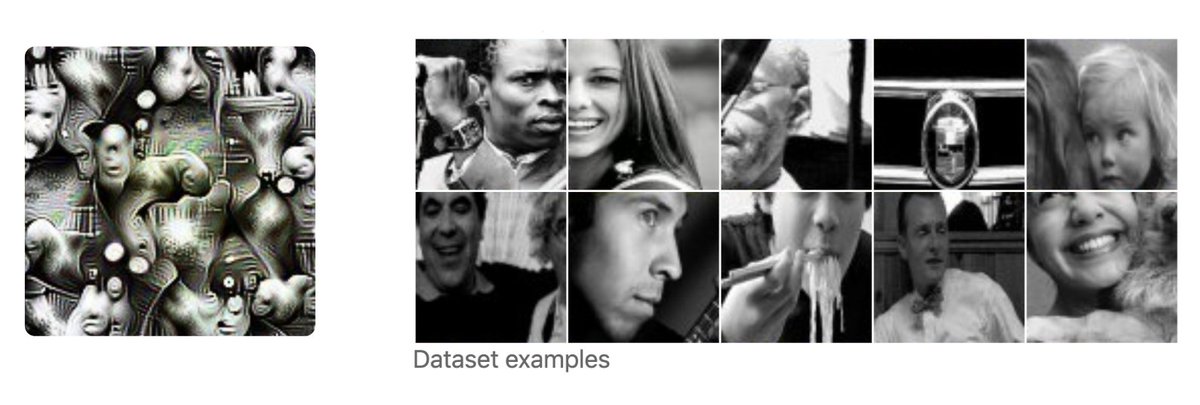In InceptionV1, Black & White detectors detect the absence of color. They& #39;re implemented by having many color features inhibit them.
#mixed3a_discussion_BW">https://drafts.distill.pub/circuits-early-overview/ #mixed3a_discussion_BW">https://drafts.distill.pub/circuits-...
#mixed3a_discussion_BW">https://drafts.distill.pub/circuits-early-overview/ #mixed3a_discussion_BW">https://drafts.distill.pub/circuits-...
In addition to the basic black & white detector, we see many black and white vs color detectors, which look for color on one side (or the center) and absence of color on the other.
#group_mixed3a_bw_vs_color">https://drafts.distill.pub/circuits-early-overview/ #group_mixed3a_bw_vs_color">https://drafts.distill.pub/circuits-...
#group_mixed3a_bw_vs_color">https://drafts.distill.pub/circuits-early-overview/ #group_mixed3a_bw_vs_color">https://drafts.distill.pub/circuits-...
These are more or less the same story: have color features inhibit on one side and excite on the other.
Why are features like this useful? Well, one function seems to be in creating more sophisticated color detection features. Early color detectors tend to contrast a color against its opposite. From this point on, we start to see some units use the absence of color instead.

 Read on Twitter
Read on Twitter